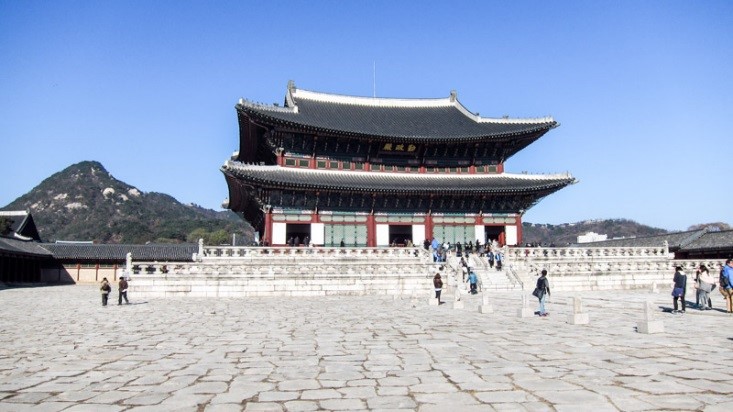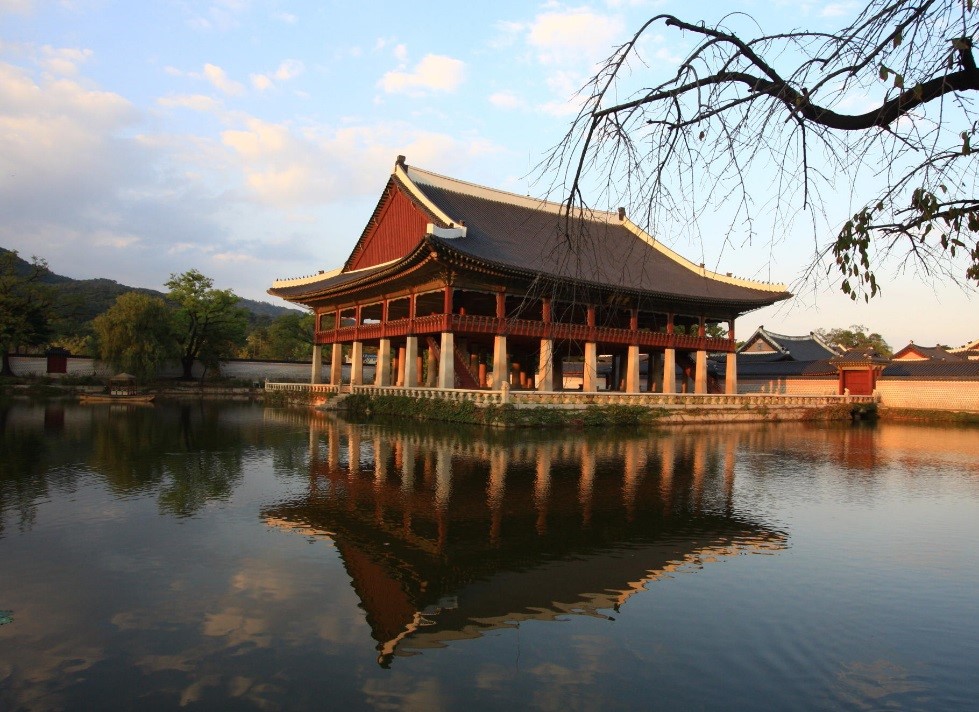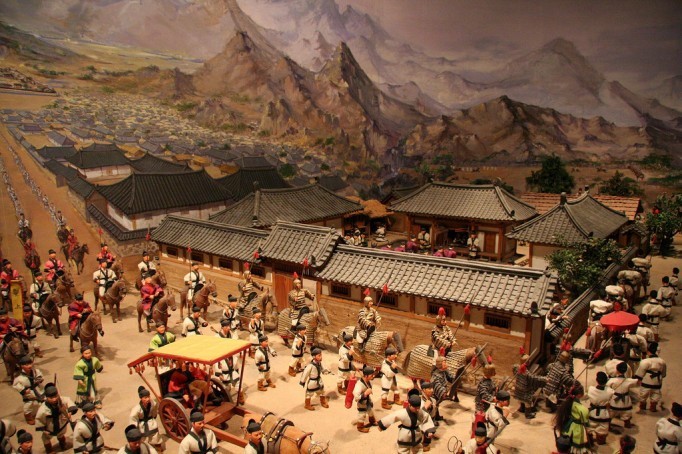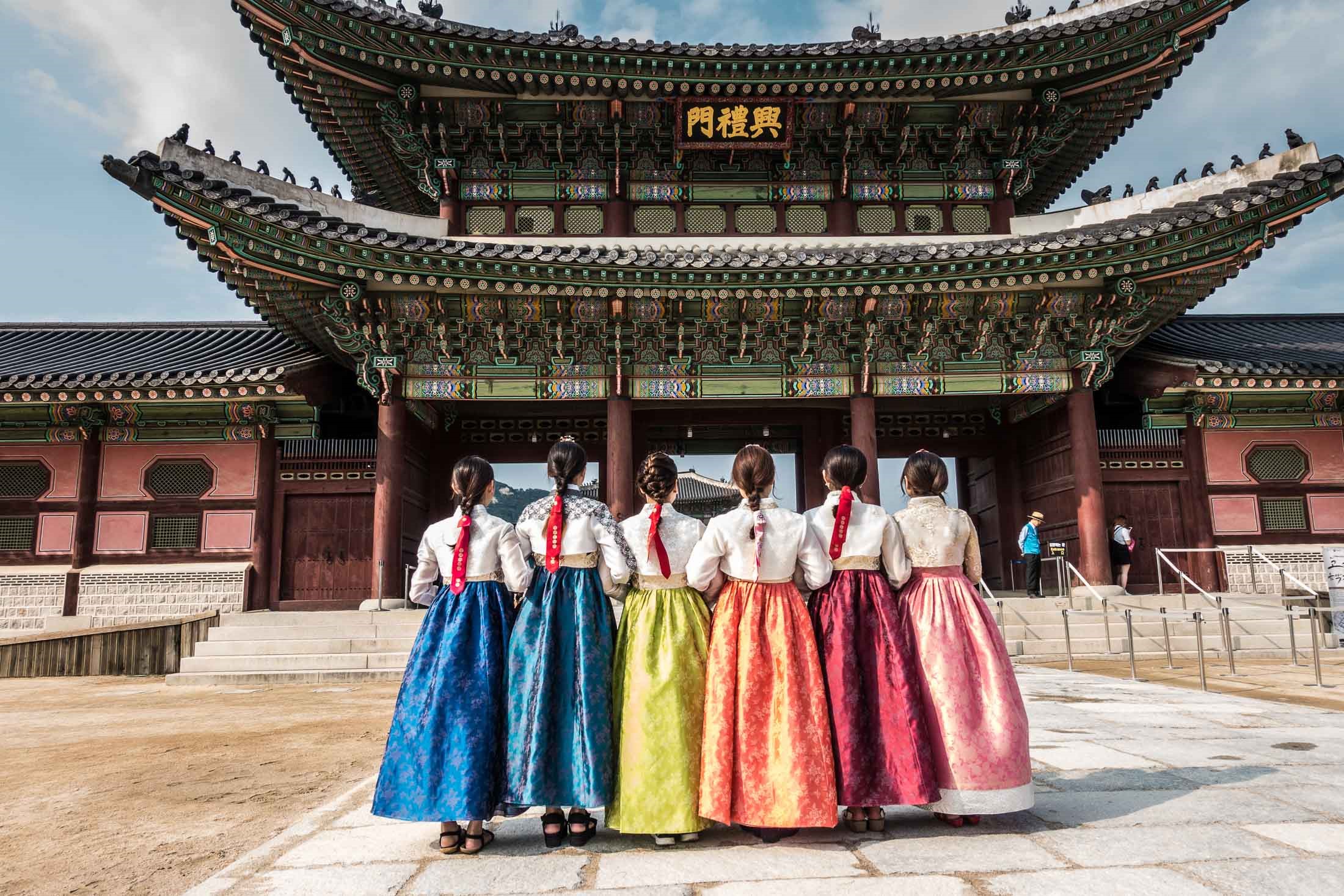Gyeongbokgung Palace In Seoul: Go Back In Time To The Joseon Dynasty
Gyeongbokgung Palace, located in northern Seoul, was built in 1395 during the Joseon Dynasty. It was the largest of the Five Grand Palaces and served as the main palace for the kings, his households, and the government.
The castle was destroyed many times due to war, but each time the rebuilding effort would successfully preserve the palace once again, which is why we are so fortunate today to still be able to witness this piece of history.
 One notable building is the two-story Geunjeongjeon, which is the main throne hall. The king would hold meetings here to discuss state affairs with his officials, and the coronation ceremonies would take place in this room as well.
One notable building is the two-story Geunjeongjeon, which is the main throne hall. The king would hold meetings here to discuss state affairs with his officials, and the coronation ceremonies would take place in this room as well.
 The other well-known building for tourists is the Gyeonghoeru Pavilion, which is surrounded by water and looks like it's floating in the middle of the pond. The pavilion served as the king's venue for feasts with the foreign envoys and his court officials. The pavilion is stunning during the spring when all the cherry blossoms are blooming in the background, creating a romantic scenery.
The other well-known building for tourists is the Gyeonghoeru Pavilion, which is surrounded by water and looks like it's floating in the middle of the pond. The pavilion served as the king's venue for feasts with the foreign envoys and his court officials. The pavilion is stunning during the spring when all the cherry blossoms are blooming in the background, creating a romantic scenery.
 Aside from walking around the palace, visitors can also take a tour of the many museums that are located inside the compound. The National Palace Museum of Korea is a great place to learn more about the Joseon Dynasty with its exhibition of royal relics. It's a perfect place for any history nerd that wants to dive deeper into the history after seeing the palace.
Aside from walking around the palace, visitors can also take a tour of the many museums that are located inside the compound. The National Palace Museum of Korea is a great place to learn more about the Joseon Dynasty with its exhibition of royal relics. It's a perfect place for any history nerd that wants to dive deeper into the history after seeing the palace.
 Another museum, The National Folk Museum of Korea, is also a must-see when you're at the palace. The museum invites its visitors to learn more about day to day lives of Korea citizens in the past, which is entirely different from the Royals in the palace.
Another museum, The National Folk Museum of Korea, is also a must-see when you're at the palace. The museum invites its visitors to learn more about day to day lives of Korea citizens in the past, which is entirely different from the Royals in the palace.
 After going to the museums, there are still many other activities for you to enjoy. One way to experience Korean heritage and style is to try on their traditional clothes, which is called hanbok. Traditional hanbok for women is consists of jeogori, a long-sleeved blouse or a jacket, and chima, the bottom wrap-around skirt that is floor length. For men, it's consists of two pieces as well, the jeogori and baji, which are loose-fitting trousers. Many places offer rentals around, and you're able to walk around the palace in hanbok.
After going to the museums, there are still many other activities for you to enjoy. One way to experience Korean heritage and style is to try on their traditional clothes, which is called hanbok. Traditional hanbok for women is consists of jeogori, a long-sleeved blouse or a jacket, and chima, the bottom wrap-around skirt that is floor length. For men, it's consists of two pieces as well, the jeogori and baji, which are loose-fitting trousers. Many places offer rentals around, and you're able to walk around the palace in hanbok.
 Even though the Gyeongbokgung Palace has been destroyed and restored many times, but the spirit of persistence in Korean culture is very much still alive in Seoul today, in the presence of Gyeongbokgung Palace.
Even though the Gyeongbokgung Palace has been destroyed and restored many times, but the spirit of persistence in Korean culture is very much still alive in Seoul today, in the presence of Gyeongbokgung Palace.



